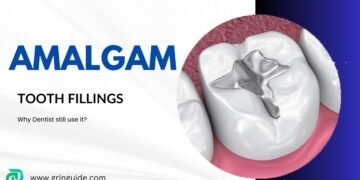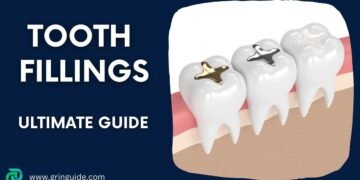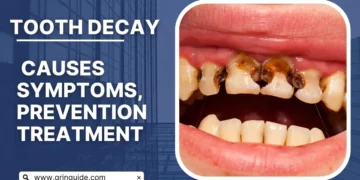Table of Contents
Introduction to Tooth Gold Fillings
Tooth gold fillings have been a cornerstone of restorative dentistry for centuries, valued for their durability and biocompatibility. These dental restorations involve the use of gold alloys to fill cavities or replace decayed portions of a tooth, offering a robust and long-lasting solution compared to other filling materials. The use of gold in dental care dates back to ancient civilizations, where it was prized not only for its aesthetic appeal but also for its remarkable physical properties.
Gold fillings are composed of a combination of gold and other metals, such as copper and silver, which enhance the strength and adaptability of the material. This makes tooth gold fillings exceptionally resistant to wear and tear, ensuring a lifespan that can exceed several decades with proper care. Despite the advent of modern dental materials, gold continues to be a preferred choice for many due to its proven track record and unique benefits.
The enduring popularity of gold fillings can be attributed to several factors. Firstly, gold is highly malleable, allowing it to be precisely shaped to fit the contours of the tooth without causing damage to the surrounding structure. Additionally, gold fillings are known for their excellent thermal conductivity, which helps in maintaining the natural temperature sensitivity of the teeth. Furthermore, gold is non-reactive with bodily tissues, significantly reducing the risk of allergic reactions and ensuring compatibility with the human body.
In the context of dental aesthetics, tooth gold fillings may not be as inconspicuous as composite or porcelain options. However, for many patients, the trade-off is worthwhile given the material’s unparalleled durability and performance. This section serves as an introduction to the multifaceted advantages of gold fillings, setting the stage for a deeper dive into their specific pros, cons, value, and cost in the subsequent sections of this blog post.
Pros of Tooth Gold Fillings
Tooth gold fillings offer a myriad of advantages, making them a preferred choice for many dental patients and professionals. One of the most significant benefits is their exceptional durability. Unlike other filling materials that may wear down over time, gold fillings can withstand the rigors of chewing and biting for decades. This longevity translates into fewer replacements and less frequent dental visits, ultimately making gold fillings a cost-effective solution.
Another noteworthy advantage of tooth gold fillings is their biocompatibility. Gold is a non-reactive metal, which means it does not cause adverse reactions when in contact with oral tissues. This makes gold fillings an excellent option for patients with sensitivities to other filling materials, such as amalgam or composite. Additionally, gold’s resistance to corrosion ensures that it maintains its integrity and effectiveness throughout its lifespan.

Studies have shown that gold fillings can last upwards of 20 years, with many cases exceeding 30 years of reliable service. This is in stark contrast to other materials like composite resins, which may need replacement every 5 to 10 years. Patients who opt for gold fillings often appreciate the peace of mind that comes with knowing their dental work is both durable and reliable.
Patient testimonials further underscore the benefits of gold fillings. One patient noted, “I’ve had my gold fillings for over 25 years, and they still feel as secure as the day they were placed.” Another patient shared, “I chose gold fillings because I wanted a long-term solution, and I couldn’t be happier with the results. I’ve never experienced any discomfort or issues with them.”
In conclusion, the durability, biocompatibility, and resistance to corrosion make tooth gold fillings a superior choice for many individuals seeking a long-lasting dental solution. The combination of these benefits ensures that gold fillings remain a valuable and cost-effective option for maintaining oral health.
Cons of Tooth Gold Fillings
While tooth gold fillings offer several benefits, there are notable disadvantages worth considering. One of the primary drawbacks is the higher upfront cost. Gold is an expensive material, and the process of creating custom gold fillings can be labor-intensive, leading to increased dental bills compared to other filling options such as composite resin or amalgam.
Another concern is the potential for allergic reactions in some patients. Although rare, individuals with metal allergies may experience adverse reactions to the gold alloy used in the fillings. It is essential for patients to discuss any known allergies with their dentist before opting for gold fillings.
Aesthetic considerations also play a significant role in the decision-making process. The visibility of gold fillings can be an issue for some people, especially when placed in the front teeth. Unlike composite fillings which can be color-matched to the natural tooth, gold fillings stand out due to their distinctive metallic appearance. This might be seen as unattractive or undesirable by those who prefer a more natural look.
When comparing gold fillings with other materials, it’s important to weigh these disadvantages against the benefits. Composite fillings, for example, are less expensive and offer better aesthetics since they blend seamlessly with the tooth. However, they may not be as durable as gold and could require more frequent replacements. Amalgam fillings are another alternative; while they are cost-effective and durable, they contain mercury, which raises health and environmental concerns for some individuals.
Addressing common misconceptions, it’s worth noting that while gold fillings are often perceived as outdated or inferior, they actually provide excellent durability and longevity. Ultimately, the choice of filling material should be based on a thorough discussion with a dental professional, considering the patient’s specific needs, preferences, and budget.
Are Tooth Gold Fillings Worth Anything?
Tooth gold fillings, often referred to as dental gold, hold intrinsic value beyond their primary dental purpose. These fillings are typically composed of a gold alloy, which may include other precious metals such as platinum, palladium, or silver. The market value of tooth gold fillings is closely tied to the prevailing prices of these constituent metals in the global commodities market. Given the fluctuating nature of gold prices, the worth of dental gold can vary significantly over time.
According to dental professionals and precious metal experts, the gold content in dental alloys often ranges between 10 and 20 karats. This translates to a purity level of approximately 40% to 80%. Therefore, the value of tooth gold fillings can be substantial, especially when gold prices are high. For instance, if the global gold market is experiencing a surge, the value of dental gold fillings would correspondingly increase, making them a potential asset for patients.
Patients may indeed sell their old gold fillings, and several factors influence their worth. The primary determinant is the weight and purity of the gold alloy used in the filling. Additionally, the current market conditions and the demand for gold and other precious metals play a crucial role. Reputable buyers, including dental laboratories, pawn shops, and precious metal refiners, often offer to purchase these gold fillings, providing a convenient avenue for patients to convert their dental gold into cash.
Insights from dental professionals highlight that while the intrinsic value of tooth gold fillings can be significant, the actual amount a patient can receive will depend on the buyer’s evaluation process. Precious metal experts recommend that patients seeking to sell their gold fillings should obtain multiple quotes to ensure they receive a fair price. This approach helps in understanding the true market value and aids in making an informed decision.
Cost of Tooth Gold Fillings
When considering tooth gold fillings, it is essential to understand the various costs involved. The price of gold is a significant factor, as it can fluctuate based on market conditions. Generally, the cost of gold fillings can range from $250 to $4,500 per tooth, depending on the size of the cavity and the amount of gold required. This price includes both the material cost and the dental procedure itself, which involves multiple steps such as preparation, fitting, and polishing.
Beyond the material and procedural costs, patients should also account for additional fees. Initial consultations and diagnostic tests, such as X-rays, typically add to the overall expense. Follow-up appointments for monitoring the filling and ensuring its proper fit can incur additional charges. These supplementary costs can vary but generally range between $50 and $200 per visit.
Comparing these expenses with other types of fillings, such as composite or amalgam, reveals a stark difference. Composite fillings, which are tooth-colored, generally cost between $90 and $250 per tooth. Amalgam fillings, made of a mixture of metals, are often even less expensive, ranging from $50 to $150 per tooth. However, the durability and longevity of gold fillings can justify the higher initial investment for many patients.
Dental insurance coverage can significantly impact the out-of-pocket expenses for gold fillings. Most dental insurance plans cover a portion of the cost, often up to 50%, particularly if the filling is deemed medically necessary. It is advisable to check with your insurance provider for specific coverage details. Additionally, many dental offices offer financing options, such as payment plans or third-party financing, to help manage the financial burden.
Understanding these cost factors can help patients make informed decisions about opting for tooth gold fillings, balancing the financial commitment with the long-term benefits of this durable and aesthetically pleasing dental solution.
Maintenance and Care for Gold Fillings
Maintaining tooth gold fillings requires a comprehensive approach to oral hygiene to ensure their durability and effectiveness. Gold fillings, known for their longevity and resilience, can last decades if properly cared for. Here are essential tips and guidelines to help you maintain your gold fillings effectively.
First and foremost, adhering to a rigorous oral hygiene routine is crucial. Brushing your teeth at least twice a day with fluoride toothpaste and using dental floss daily to remove plaque and food particles is fundamental. These practices help prevent cavities and gum disease, which can compromise the integrity of your gold fillings. An electric toothbrush can be particularly effective in providing a thorough clean.
Dietary considerations also play a significant role in the maintenance of gold fillings. Limiting the intake of sugary and acidic foods and beverages can help protect your teeth from decay and erosion. A balanced diet rich in fruits, vegetables, and dairy products provides essential nutrients that strengthen your teeth and gums, contributing to the overall health of your mouth.
Regular dental check-ups are indispensable for the upkeep of gold fillings. Visiting your dentist at least twice a year allows for professional cleaning and early detection of any potential issues. Your dentist can monitor the condition of your gold fillings and ensure they remain securely in place. Professional cleanings remove tartar buildup that regular brushing and flossing might miss, thus preventing gum disease and other oral health problems.
Gold fillings require specific care considerations compared to other materials. While gold is highly durable, it is still crucial to avoid habits that can damage your fillings, such as chewing on hard objects or using your teeth as tools. Additionally, if you grind your teeth, wearing a night guard can protect both your natural teeth and your gold fillings from excessive wear.
In conclusion, the longevity of tooth gold fillings significantly depends on diligent oral hygiene, mindful dietary choices, and regular dental visits. By following these guidelines, you can ensure that your gold fillings remain in excellent condition, providing you with a reliable and aesthetically pleasing solution for many years to come.
Patient Experiences and Testimonials
Patient experiences with tooth gold fillings are diverse and reflective of individual circumstances, such as dental health, lifestyle, and personal preferences. Many patients who opt for gold fillings highlight their durability and longevity as significant benefits. For instance, Emily, a 45-year-old teacher, shared her positive experience, stating, “I chose gold fillings because I wanted something reliable and long-lasting. It’s been over a decade, and I haven’t had any issues. The investment was well worth it.”
On the other hand, some patients have noted aesthetic concerns. John, a 32-year-old marketing executive, mentioned,
While I appreciate the durability of my gold fillings, I sometimes feel self-conscious about the metallic appearance, especially when I smile widely. However, the peace of mind knowing they won’t easily wear out is a big plus for me.
Cost is another recurrent theme in patient feedback. Gold fillings typically come with a higher price tag compared to other materials. Sarah, a 29-year-old artist, reflected, “The initial cost was quite high, but considering the longevity and fewer dental visits for replacements, it balances out in the long run.”
Moreover, the procedure and recovery experience also vary. Some patients, like Tom, a 50-year-old engineer, reported minimal discomfort:
The procedure was straightforward, and I experienced very little pain afterwards. My dentist was excellent, and the recovery was smooth.
Conversely, others have found the process more challenging. Lisa, a 40-year-old chef, noted,
I had some sensitivity and discomfort for a few days post-procedure, but it subsided. The overall experience was positive, and I value the strength of my gold fillings.
Overall, patient testimonials underscore that while tooth gold fillings are highly valued for their durability and long-term benefits, individual experiences can significantly differ. These variations are influenced by personal dental health, aesthetic preferences, and financial considerations, offering a comprehensive view of what patients might expect when opting for gold fillings.
Conclusion: Is a Gold Filling Right for You?
In conclusion, tooth gold fillings offer a durable and long-lasting solution for dental restorations. Their resilience and biocompatibility make them a preferred option for many dentists. However, it is essential to weigh the pros and cons carefully. Gold fillings are known for their longevity and resistance to wear, making them an excellent choice for molars and other teeth subjected to high pressure. On the downside, the cost can be significantly higher compared to other materials, and their noticeable color might be a concern for some individuals.
Moreover, the placement process for gold fillings often requires multiple dental visits, which could be inconvenient for those with a busy schedule. It is also worth considering the potential for allergic reactions, though they are rare. A significant factor in deciding on gold fillings is their value and cost. While the initial investment might be steep, the long-term benefits often justify the price.
Ultimately, the decision to opt for tooth gold fillings should be made in consultation with your dentist, who can provide personalized advice based on your specific dental needs and overall health. They can help you understand how gold fillings compare with other materials like amalgam, composite, and ceramic, ensuring you make an informed choice.
We encourage you to discuss all the options available, considering factors such as durability, aesthetics, and budget. By weighing the pros and cons, you can determine if the benefits of gold fillings align with your dental care goals. Make a well-informed decision that prioritizes both your oral health and personal preferences.
Take the next step towards better dental health by scheduling a consultation with your dentist today. Together, you can evaluate the best course of action for maintaining a strong, healthy smile.
FAQs
-
How Long Does a Gold Filling Last?
Gold tooth fillings are renowned for their durability. Typically, a gold filling can last anywhere from 15 to 30 years, with many cases surpassing this range. The longevity of gold fillings is attributed to the metal’s resistance to corrosion and wear, making it a reliable choice for dental restorations.
-
Why Did Dentists Use Gold for Fillings?
Gold has been a preferred material for dental fillings due to its biocompatibility, strength, and longevity. Unlike other metals, gold does not corrode or tarnish, ensuring the filling remains intact for decades. Additionally, gold fillings can withstand the pressures of chewing and grinding, making them particularly suitable for molars and premolars.
-
Is Gold Still Used in Dentistry?
While gold tooth fillings are less common today, they are still used in some cases. Advances in dental materials have introduced alternatives like composite resins and ceramics, which offer aesthetic benefits by matching the natural color of teeth. However, gold remains an option for those seeking a durable and long-lasting solution.
-
Are Gold Tooth Fillings Safe?
Gold fillings are considered safe and have a long history of use in dentistry. The material is biocompatible, meaning it does not cause adverse reactions in the body. Additionally, gold’s resistance to wear and corrosion ensures it remains a stable and effective filling material over time.









